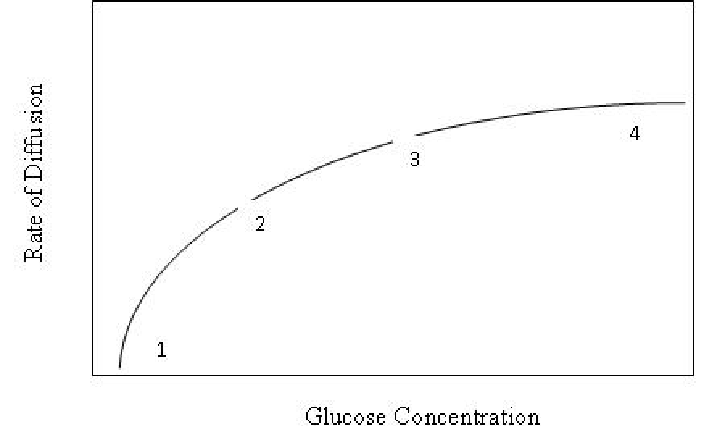Choose the one most appropriate answer for each.
A. Barr body
B. Histone
C. Repressor protein
D. Promoter
E. Master genes
F. Homeotic genes
G. Dosage compensation
H. Enhancers
A. A condensed X chromosome
B. Protein that combines with DNA all along its length
C. Attaches or detaches from operator to regulate transcription
D. Portion of the operon that binds RNA polymerase
E. Genes that induce expression of other genes
F. Genes controlling the development of specific body parts
G. Mechanism of equalizing gene expression between the sexes
H. Binding sites on DNA for regulatory proteins that increase transcription rates
You might also like to view...
Carrier proteins are saturated at which point?
The diagram shows the rate of diffusion into a cell using carrier proteins.

A. 1
B. 2
C. 3
D. 4
Clarify Question
· What is the key concept addressed by the question?
· What type of thinking is required?
Gather Content
· What do you know about carrier proteins? What other information is related to the question?
Choose Answer
· Given what you now know, what information and/or problem solving approach is most likely to produce the correct answer?
Reflect on Process
· Did your problem-solving process lead you to the correct answer? If not, where did the process break down or lead you astray? How can you revise your approach to produce a more desirable result?
The site of anaerobic ammonia oxidation in the recently described genera Brocadia, Kuenenia, Scalindua, and Anammoxoglobus is called the ________.
Fill in the blank(s) with the appropriate word(s).
Traditionally, classification of fungi has been based on
a. DNA sequences. b. body type. c. mode of feeding. d. whether the fungus is a saprobe, parasite, or in a mutual symbiosis. e. structures that release sexual spores.
Algae are plants.
a. true b. false